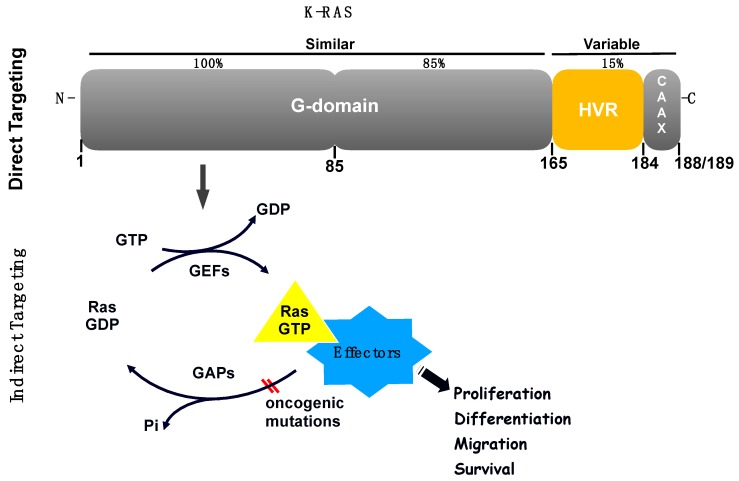Figure 2.
Schematic representation of examples of direct and indirect targeting of K-RAS based on different publications discussed in this review. The G-domain of the K-RAS protein (amino acids 1–165—a highly homologous region among RAS proteins) includes the GTP and GDP-binding pockets of RAS responsible for RAS switch “on” and “off”, respectively. This region is followed by the C-terminus (amino acids 165-188/189), which includes the hypervariable region (HVR) and the CAAX box motif which undergoes posttranslational modifications and determines membrane anchoring (cell location). This region is also the most variable among RAS proteins (15% similarity). K-RAS can be targeted directly on different sites on its own protein structure, or indirectly, via targeting of proteins which interact with K-RAS such as GEFs and GAPs and also K-RAS effectors (located downstream of K-RAS protein).

